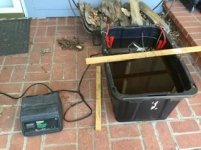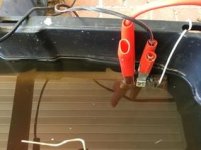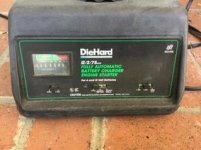I am fairly new to restoring cast iron, but I set up an electrolysis tank and successfully cleaned a number of pans. When I tried using it to clean a Favorite #3 pan I noticed something different. My sacrificial metal (anode) was bubbling instead of the pan. I let it run for a day. When I pulled the pan out it was ruined. It seemed to have pulled a layer of the metal off. Yes, the positive terminal was connected to the anode and the negative to the pan. I used the exact setup that successfully cleaned several pans. After this happened, I changed the solution and the anodes. The next pan I cleaned with it came out fine (pan bubbling). I just tried another pan and now the pan AND the anode are bubbling. I don’t want to ruin another pan. Is the anode (sacrificial piece) supposes to bubble? What might have gone wrong on the pan I ruined?
Thanks
Jim
Thanks
Jim



